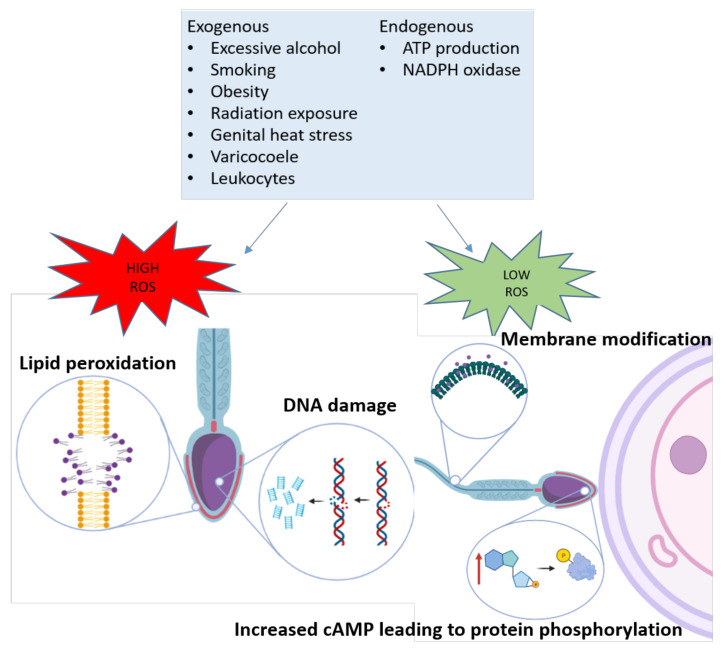Figure 1.
Sources of ROS generated exogenously and endogenously in sperm. At low levels, ROS contributes to successful fertilization by increasing membrane fluidity through cholesterol exudation and through tyrosine phosphorylation of target proteins required for fertilization. Certain ROS species directly inhibit tyrosine phosphatases and others contribute to the activation of cyclic adenosine monophosphate (cAMP), leading to protein kinase A activation and phosphorylation of target proteins.

